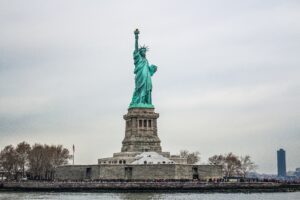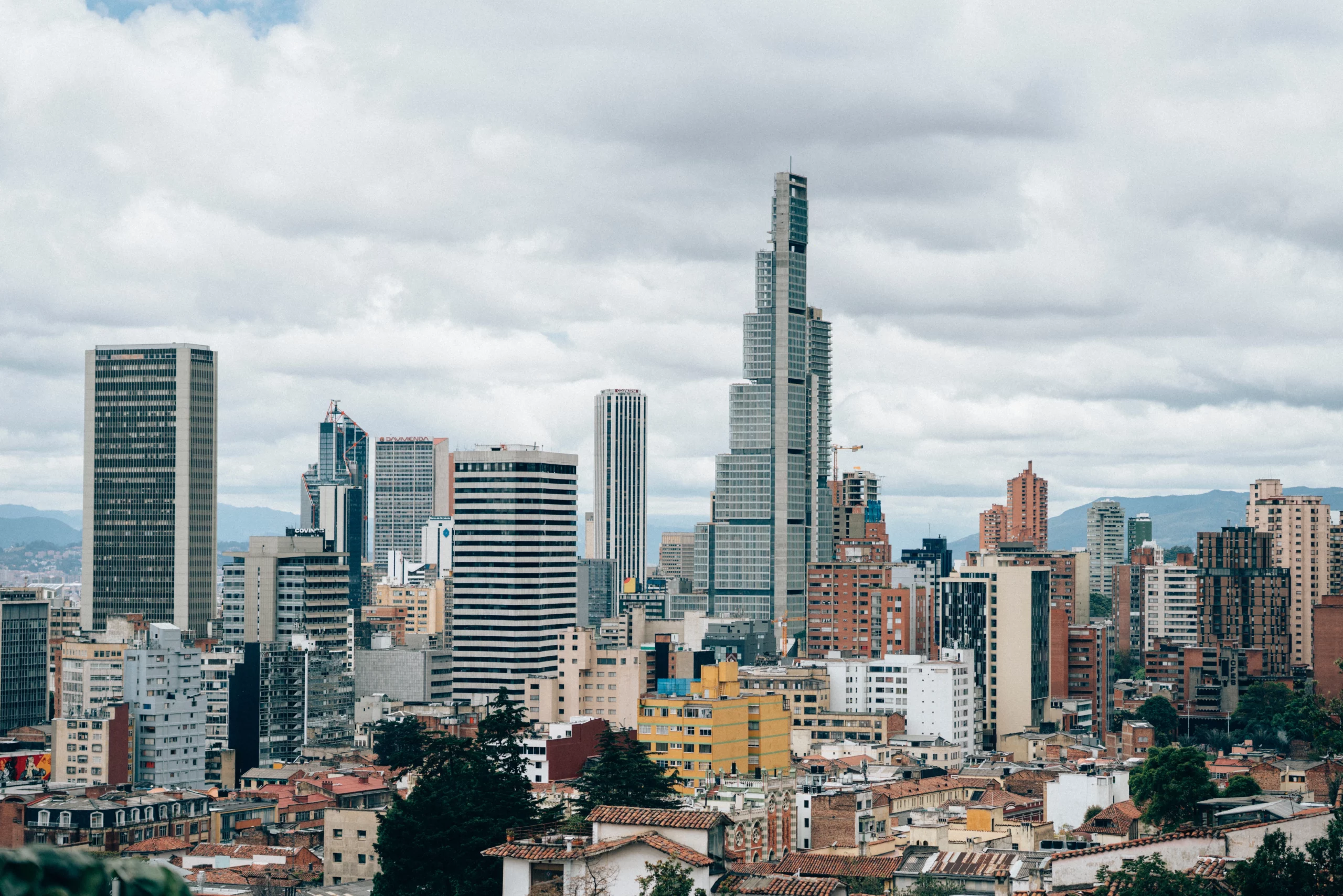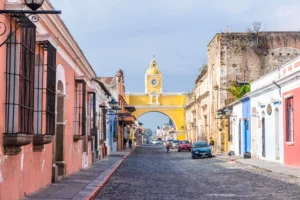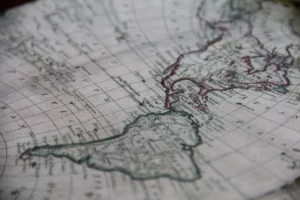
How Does the United States Economic Model Stand in 2024?
Delve into the 2024 U.S. economic landscape: A comprehensive analysis of growth projections, strategic reforms, and actionable insights for a resilient economy.

The Americas, with vast diversity and rich history, have been shaped by countless events, cultures, and peoples over millennia. Early civilizations laid the foundations of society, leading to the complex geopolitical dynamics of the modern era. The construction of the Americas is a tale of innovation, conflict, and integration.
The story of the Americas begins before European explorers arrived. Advanced civilizations like the Aztecs, Mayans, and Incas carved out complex societies. These early peoples were architects of sophisticated agricultural methods, stunning architectural achievements, and rich cultural practices. These continue to fascinate the world today.
Aztecs: Known for their engineering marvels, including the magnificent city of Tenochtitlán, built on an island in the middle of a lake.
Mayans: Renowned for their deep understanding of astronomy and mathematics, as well as their distinctive writing system.
Incas: Mastered the harsh Andean environment to create a vast empire connected by an extensive network of roads.
These civilizations laid the groundwork for the diverse tapestry of the Americas. They contributed technologies, philosophies, and governance structures. Their achievements in agriculture revolutionized food production and sustainability practices. For instance, the Aztecs developed chinampas (floating gardens), while the Incas practiced terrace farming.
The arrival of European explorers in the 15th century marked a turning point in the history of the Americas. Led by figures such as Christopher Columbus and Hernán Cortés, this era introduced a period of colonization that would reshape the continent’s demographic, cultural, and political landscapes. The colonization process was characterized by:
Cultural Exchanges: The introduction of European languages, religions, and customs, mixed with indigenous traditions, created unique cultural blends.
Conflicts: The conquest of native territories often led to violent clashes, reshaping the power dynamics within the region.
Governance Changes: European models of governance replaced indigenous systems, laying the foundations for the modern states we see today.
The impact of European colonization on the Americas cannot be overstated. It set off a chain of events that would lead to the creation of new identities, the exploitation of resources, and the emergence of new powers. For more insights into the transformation during this period, explore the “geopolitics of Latin America” at Geopolitics of Latin America.
The construction of the Americas is not just a story of ancient civilizations and colonial conquests but also a tale of modern development. The 19th and 20th centuries, in particular, saw significant infrastructure projects that would further transform the continent:
Railroads and Steamboats: Revolutionized transport, connecting distant regions and facilitating trade and migration.
The Panama Canal: A monumental engineering feat completed in 1914, it linked the Atlantic and Pacific oceans, boosting global trade and cementing the United States’ position as a world power.
These developments underscored the Americas’ transition into the modern age, fostering economic growth and increased connectivity between nations. The construction of such infrastructure played a crucial role in shaping the Americas’ economic landscape, a topic further explored in the “United States economic model” at United States Economic Model.
The architectural heritage of the Americas stands as a testament to the ingenuity and creativity of its people over centuries. This legacy ranges from the ancient ceremonial centers of early civilizations to the modern skyscrapers that define the skyline of cities like New York and Chicago today.
Ancient Marvels: The Olmecs, known as the “Mother Culture” of Mesoamerica, left behind colossal head statues that intrigue archaeologists and historians alike. The Mayans’ step pyramids and the Incas’ Machu Picchu speak volumes about the advanced engineering and architectural skills of these civilizations.
Colonial Architecture: The Spanish and Portuguese colonization introduced Baroque and Renaissance architectural styles, evident in the historic centers of cities like Mexico City, Lima, and Salvador.
These structures not only showcase a range of architectural styles but also reflect the socio-political and religious dynamics of their times.
For an in-depth exploration of these ancient marvels, this list of the oldest buildings in the Americas offers a comprehensive overview.
The territorial expansion of European powers and later, the newly independent nations of the Americas, had profound impacts on the indigenous populations and the landscape of the continent.
The chart represents the percentage of the indigenous population affected by migration due to territorial construction across different historical eras in the Americas. It spans from the Pre-Columbian period to the 20th century. The graph showcases an increasing impact, highlighting the significant influence of territorial changes on indigenous communities.
Displacement and Assimilation: Native American tribes faced displacement from their ancestral lands, as settlers and governments pursued policies of expansion and assimilation.
Resistance and Survival: Despite the challenges, indigenous peoples resisted colonization and cultural erasure, preserving their languages, traditions, and ways of life.
The construction of territories in the Americas is a story of conflict and resilience, highlighting the struggles of indigenous populations to maintain their sovereignty and identity. The challenges faced by these communities in the wake of territorial expansion are further detailed in The Americas section at Regions of the Americas.
The Americas are characterized by a diverse tapestry of cultural areas, shaped by historical, geographical, and social forces. This diversity is evident in:
Mesoamerica: Home to civilizations like the Olmecs, Mayans, and Aztecs, Mesoamerica is celebrated for its monumental architecture, complex societies, and rich cultural heritage.
South America: The Inca Empire’s vast territory showcased remarkable achievements in architecture, agriculture, and social organization.
North America: The continent’s human landscape reflects a blend of indigenous cultures, European colonial influences, and modern developments.
These major cultural areas highlight the complexities of territorial construction in the Americas, influenced by a myriad of factors including migration, trade, and cultural exchange. For further insights into the geopolitical implications of these cultural areas, American Geopolitics provides a thorough analysis.
The construction of the Americas territories intertwines ancient architectural achievements with the impacts of territorial expansion on indigenous communities. It also involves the formation of diverse cultural areas. The evolving landscape of the Americas reveals stories of resilience, innovation, and transformation as we delve deeper into this historical journey.
In today’s globalized world, the historical construction of the Americas influences geopolitical dynamics, economic development, and cultural exchanges. The legacy of early civilizations and centuries of colonization has shaped the modern identity of the Americas. Contemporary issues like migration, trade policies, and geopolitical tensions are rooted in historical contexts of territory construction and cultural integration.
Migration and Identity: The movement of people within and across the Americas’ borders reflects the ongoing process of cultural blending and identity formation.
Economic Integration: Trade agreements and economic partnerships highlight the interconnectedness of the Americas’ economies, a direct outcome of historical trade routes and territorial expansions.
Geopolitical Challenges: Disputes over territory and sovereignty continue to emerge, reminding us of the complex history of borders and state formation in the region.
Understanding these contemporary issues requires a deep appreciation of the historical construction of the Americas, a narrative that spans thousands of years and encompasses a wide range of cultures and societies.
Efforts to recognize and integrate the diverse territories of the Americas into national narratives have gained momentum. This includes acknowledging the contributions of indigenous populations, celebrating the cultural heritage of various regions, and addressing historical injustices. Such recognition is crucial for building inclusive societies that value the rich tapestry of the Americas’ history.
| Era | Event | Impact |
| Pre-Columbian | Rise of Major Civilizations (e.g., Aztec, Maya, Inca) | Laid the foundations for agriculture, architecture, and social organization. |
| 15th-17th Centuries | European Colonization | Introduced new cultures, languages, and governance structures; led to significant demographic changes. |
| 19th Century | Independence Movements | Formation of sovereign nations; reshaped political boundaries. |
| 20th Century | Economic and Infrastructure Development | Fostered growth and connectivity; influenced global trade dynamics. |
This table encapsulates the transformative events that have shaped the historical construction of the Americas, highlighting the region’s dynamic evolution from ancient civilizations to modern nation-states.
The historical construction of the Americas is rich and complex. It’s marked by the rise and fall of great civilizations and the dramatic changes wrought by European colonization. The modern era brings ongoing challenges and opportunities. Reflecting on the past, it’s evident that the construction of the Americas is not just a sequence of events. It’s a continuous process shaping the lives of millions. The legacy of this construction is evident in the diverse cultures, languages, and political landscapes of the Americas today. Recognizing and understanding this legacy is crucial for addressing contemporary challenges and building a future that honors the rich history of this vast and vibrant region.
Exploring the Americas’ past offers valuable insights into the forces shaping our world. It underscores the importance of historical awareness in navigating the complexities of the present and future. Moving forward, let’s draw on history’s lessons to foster a more interconnected and inclusive Americas. We celebrate the diversity and resilience defining this remarkable part of the world.

Delve into the 2024 U.S. economic landscape: A comprehensive analysis of growth projections, strategic reforms, and actionable insights for a resilient economy.

Discover the pivotal trends shaping Latin America’s geopolitical landscape in 2024, from economic growth to the rising tide of authoritarianism and political polarization.

Delve into the evolving geopolitical landscape of the Americas in 2024, where conflict, cooperation, and the emergence of new powers redefine the region.